How to Use Mandalas for Meditation: A Quick Start Guide
Mandalas are intricate designs that have been used for centuries in spiritual practices, particularly in Buddhism and Hinduism. In recent years, mandalas have gained popularity as a tool for meditation and mindfulness. Meditating with mandalas can be a powerful way to calm the mind, reduce stress, and enhance focus.
To meditate with mandalas, one can simply gaze at the design or use it as a focal point for breathing exercises. Alternatively, coloring mandalas can be a form of moving meditation, allowing the mind to focus on the present moment and release any distracting thoughts. Mandalas can be created using any medium, such as pencils, paints, or even sand.
This quick start guide will explore the benefits of using mandalas for meditation, explain how to meditate with mandalas, and provide tips for coloring mandalas as a form of meditation. Whether you are new to meditation or a seasoned practitioner, incorporating mandalas into your practice can deepen your experience and help you achieve a greater sense of calm and inner peace.
Key Takeaways
- Meditating with mandalas can calm the mind, reduce stress, and enhance focus.
- Mandalas can be used as a focal point for breathing exercises or as a form of moving meditation through coloring.
- Incorporating mandalas into your meditation practice can deepen your experience and help you achieve a greater sense of calm and inner peace.
Meditating with Mandalas

Mandalas have been used for centuries as a tool for meditation and self-reflection. They are intricate, circular designs that represent the universe and can be used to focus the mind and calm the body. Here are some tips for meditating with mandalas.
Meditation Techniques
There are many different meditation techniques that can be used with mandalas. One simple technique is to sit in a quiet place and gaze at the center of the mandala. As you focus on the center, allow your mind to become still and your breathing to slow down. You can also try using a guided meditation that incorporates mandalas.
Setting Your Intention
Before beginning your meditation practice, it can be helpful to set an intention. This can be a word or phrase that represents what you hope to gain from your meditation practice. As you focus on the mandala, keep your intention in mind and allow it to guide your thoughts.
Dealing with Distractions
It is common for the mind to wander during meditation. When this happens, gently bring your focus back to the mandala. If you find yourself getting distracted by thoughts or noises in the periphery, simply acknowledge them and then bring your attention back to the center of the mandala.
Incorporating Mandalas into Prayer
Mandalas can also be used as a tool for prayer. As you focus on the mandala, you can repeat a prayer or mantra that is meaningful to you. This can help to deepen your connection to your spiritual practice and bring a sense of peace and calm to your mind and body.
Overall, meditating with mandalas can be a powerful tool for cultivating mindfulness, self-awareness, and compassion. By incorporating mandalas into your meditation practice, you can deepen your connection to the present moment and cultivate a sense of inner peace and calm.
Benefits of Mandalas and Meditation
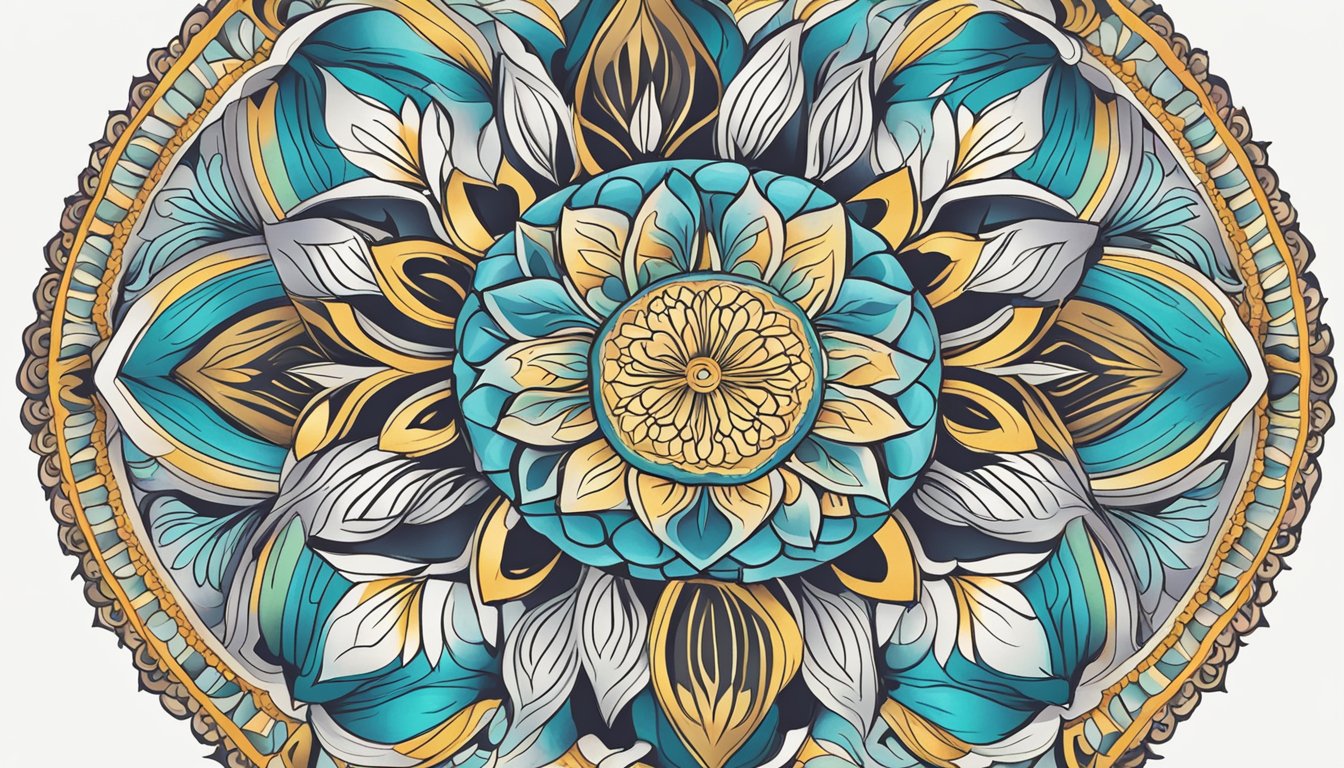
Mandalas have been used for centuries as a tool for meditation and spiritual growth. In recent years, there has been a growing interest in the therapeutic benefits of mandalas and meditation for both physical and mental health. This section will explore the benefits of mandalas and meditation, including their physical, mental, and emotional benefits, as well as their therapeutic uses.
Physical Benefits
Meditation and mandalas have been shown to have a range of physical benefits. Studies have shown that regular meditation can help to reduce blood pressure, improve immune function, and increase melatonin levels. Melatonin is a hormone that regulates sleep, and increased levels of melatonin can improve sleep quality and help to reduce the symptoms of depression and anxiety.
Additionally, mandalas have been used in art therapy to help cancer survivors cope with the physical and emotional effects of cancer treatment. Research has shown that mandala coloring can help to reduce pain and distress in cancer patients, and may also be helpful for individuals dealing with addiction or smoking cessation.
Mental and Emotional Benefits
In addition to their physical benefits, mandalas and meditation have been shown to have a range of mental and emotional benefits. Regular meditation practice has been linked to reduced symptoms of anxiety, depression, and stress, and can help to promote emotional well-being and calmness.
Mandalas have also been used in art therapy to help individuals with a range of mental health conditions, including anxiety and depression. The process of coloring a mandala can be relaxing and meditative, and can help to promote feelings of peace and relaxation.
Therapeutic Uses
Mandalas and meditation have a range of therapeutic uses, and can be helpful for individuals dealing with a variety of physical and mental health conditions. In addition to their use in cancer treatment and addiction recovery, mandalas and meditation can be helpful for individuals dealing with chronic pain, PTSD, and other trauma-related conditions.
Mandalas can also be used as a feedback tool in therapy, helping individuals to explore their thoughts and emotions in a safe and supportive environment. The process of creating and coloring a mandala can help individuals to express themselves in a non-verbal way, and can be a helpful coping skill for individuals dealing with a range of mental health conditions.
In conclusion, mandalas and meditation have a range of physical, mental, and emotional benefits, and can be helpful for individuals dealing with a variety of health conditions. Whether used as a tool for relaxation and stress relief, or as a therapeutic tool in a clinical setting, mandalas and meditation can help to promote healing and well-being.
Final Thoughts on Mandalas and Meditation
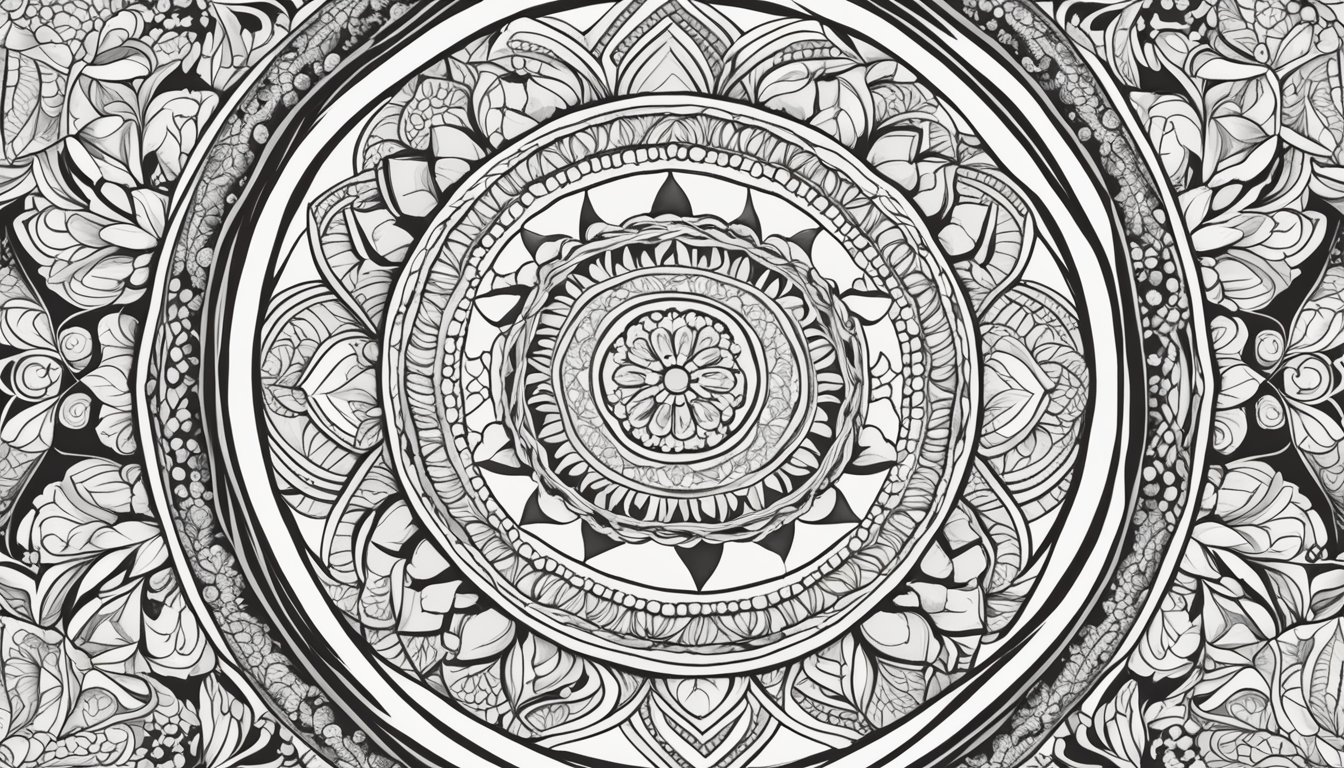
Mandalas are a powerful tool for meditation and self-expression. By creating or coloring mandalas, individuals can tap into their subconscious and explore their inner world. Mandalas can help individuals find balance, comfort, and healing, making them a valuable addition to any meditation practice.
When using mandalas for meditation, it is important to find a comfortable position and create a peaceful environment. This will allow the individual to fully immerse themselves in the meditation experience and connect with the mandala. The repetitive patterns and shapes of the mandala can help quiet the mind and promote a sense of calm and relaxation.
Mandalas can also be used to tap into one's own power and creativity. By creating their own mandalas, individuals can express themselves in a unique and personal way. This can be a powerful tool for self-discovery and personal growth.
In addition, mandalas can be a thoughtful and meaningful gift for loved ones. A personalized mandala can be a symbol of love, support, and healing.
Overall, mandalas offer a versatile and powerful tool for meditation and self-expression. By incorporating mandalas into their meditation practice, individuals can find balance, comfort, and healing, while tapping into their own power and creativity.
From Meditation to Coloring and Back again
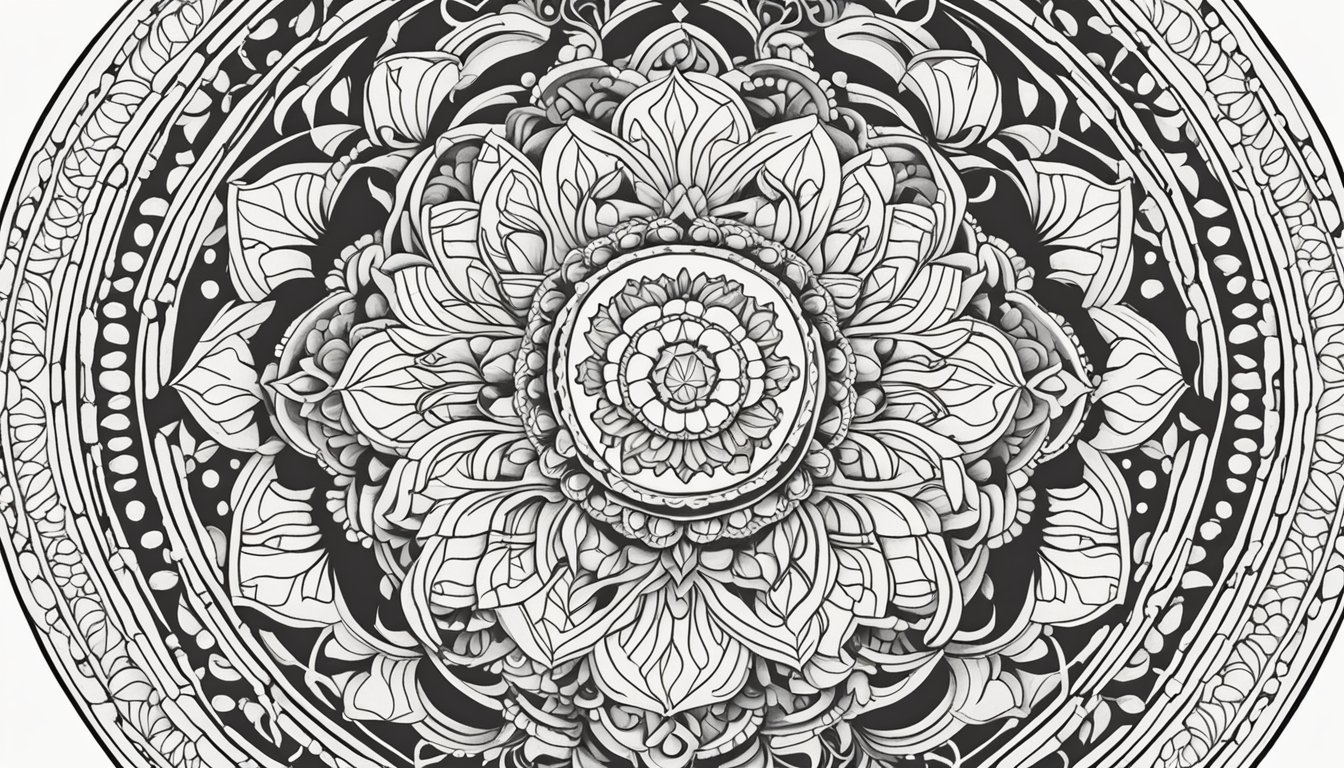
Mandalas can be used as a tool for meditation, and coloring them can be a meditative practice on its own. The process of coloring mandalas can be relaxing and enjoyable, and it can lead to a trance-like state that helps the mind quieten and the body relax.
The use of mandalas for meditation and coloring has been growing in popularity as more people embrace the centuries-old customs of using mandalas as tools for contemplation and meditation. Practicing away from distractions and modern devices, creating or coloring in a mandala can lead to a state of mindfulness and relaxation.
Mandalas are used as an aid in meditation as they take patience and concentration to create. It is the process itself of drawing or painting a mandala that is relaxing and enjoyable. Coloring mandalas can be a calming activity that can help reduce stress and anxiety. People have been experiencing a significant sense of calmness and well-being once they start meditating through mandalas.
Coloring mandalas can also help individuals focus their attention and develop their concentration skills. It can be a great way to practice mindfulness and live in the present moment. The use of mandalas for meditation can also help individuals develop their creativity and artistic skills.
Overall, the use of mandalas for meditation and coloring can be a powerful tool for achieving a state of mindfulness and relaxation. It can help individuals develop their concentration skills, reduce stress and anxiety, and promote a sense of well-being.
The Art of Coloring Mandalas
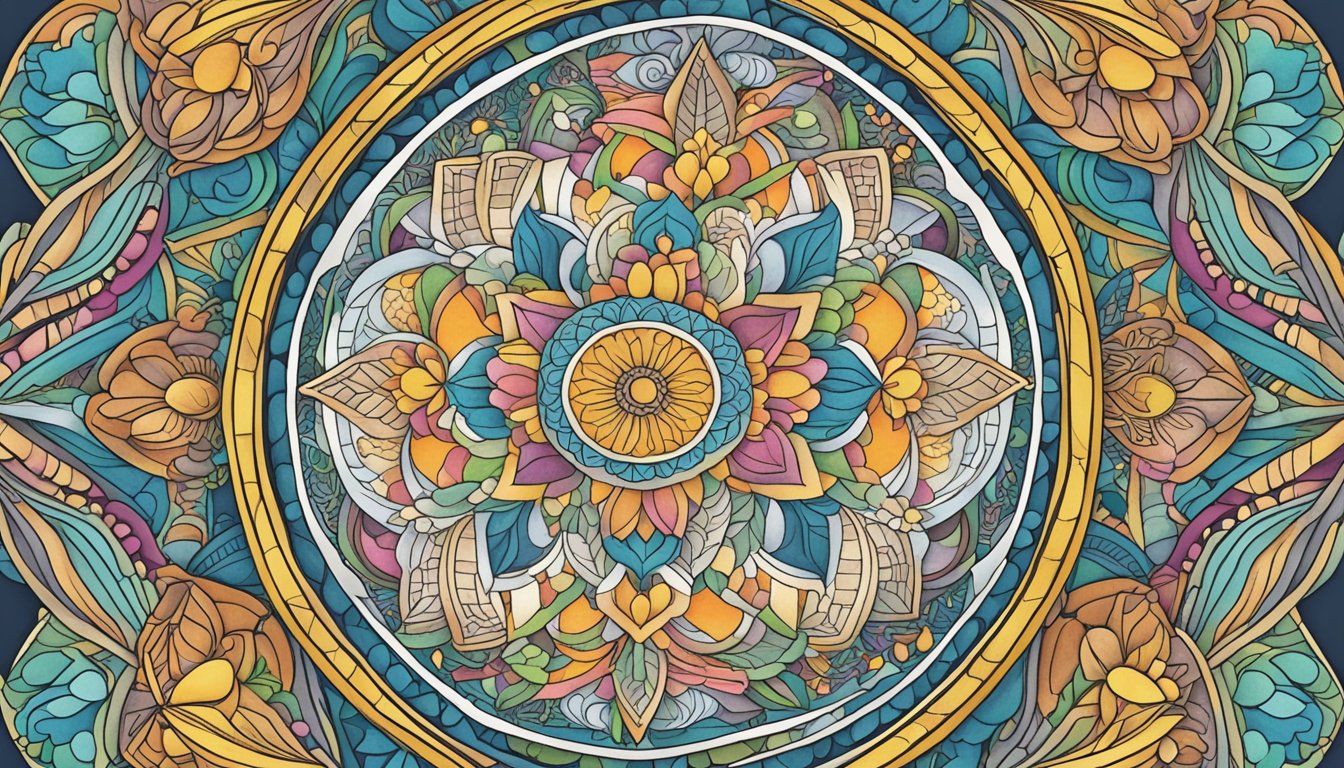
Mandalas have been used for centuries as a form of creative expression and spiritual practice. Coloring mandalas can be a meditative and therapeutic activity that helps to calm the mind and reduce stress.
Choosing Your Supplies
To get started, you will need a mandala drawing or coloring book and some coloring supplies. You can use pens, crayons, pencils, pastels, or colored pencils in various colors. Choosing the right colors is important as different colors can have different meanings and effects on mood. For example, red is associated with energy and passion, gold with wealth and prosperity, and black with power and mystery.
Creating Your Mandalas
If you are feeling creative, you can also create your own mandalas. You can use different shapes and patterns to create your mandala, such as circles, squares, triangles, and more. You can draw your mandala on paper or use sand to create a sand mandala. Creating your own mandala can be a fun and rewarding experience that allows you to express your creativity.
The Coloring Process
Once you have your mandala and coloring supplies, it's time to start coloring. The key to using mandalas for meditation is to focus on the coloring process. Pay attention to the colors you are using and the repetitive movement of coloring. This can help to calm the mind and improve concentration.
Mandalas for Children
Mandalas can be a great activity for children as well. Coloring mandalas can help children develop their creativity and improve their focus and concentration. There are many mandala coloring books available for children that feature fun and engaging designs.
Mandalas for Adults
Coloring mandalas is not just for children. There are many adult coloring books available that feature intricate and detailed mandalas. Coloring mandalas can be a great way for adults to relax and unwind after a long day.
In conclusion, coloring mandalas is a simple and effective way to incorporate art therapy into your meditation practice. Whether you are a child or an adult, coloring mandalas can help to reduce stress, improve focus and concentration, and promote creativity and self-expression.
Frequently Asked Questions
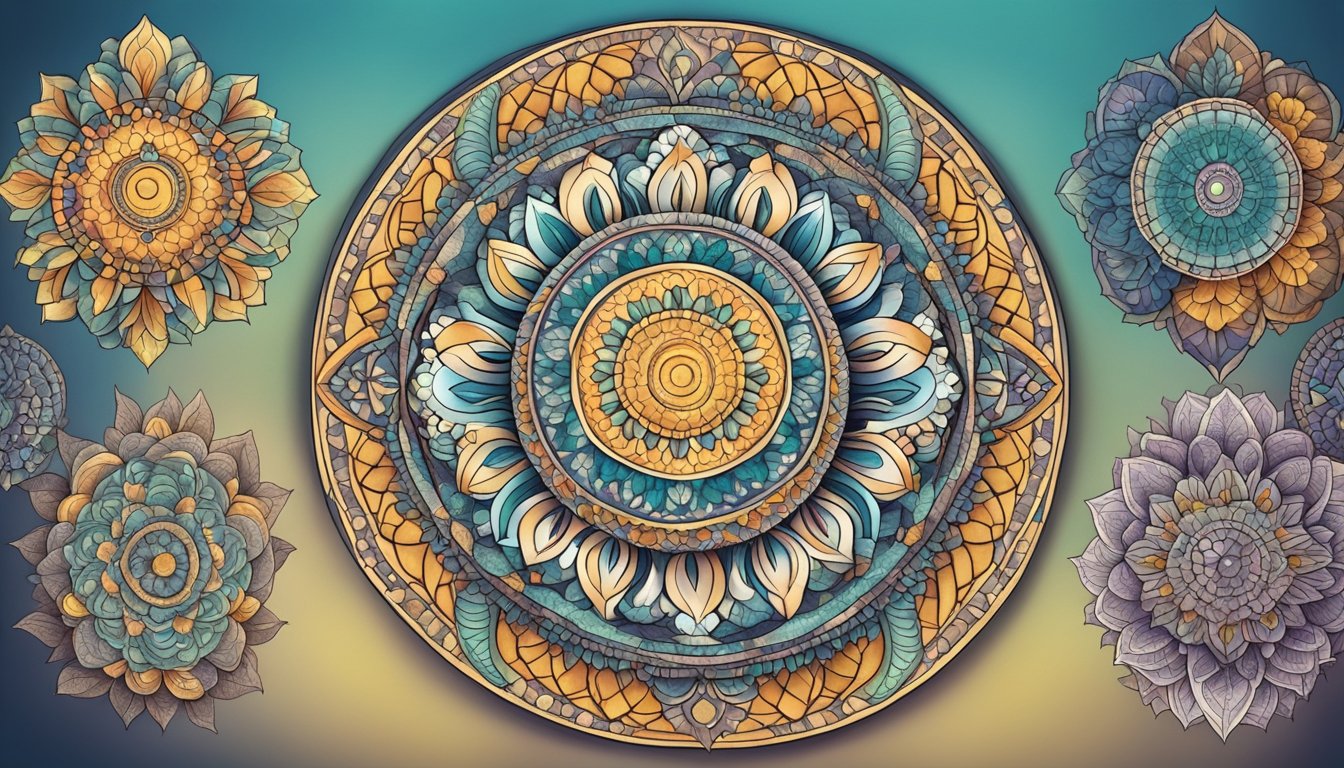
What are the benefits of using mandalas for meditation?
Mandalas can be used as a tool for meditation and mindfulness. The process of creating or coloring in a mandala can help reduce stress and anxiety, promote relaxation, and increase focus. Mandalas are also spiritually symbolic and can aid in spiritual growth and self-discovery.
Can anyone use mandalas for meditation, or is it only for experienced practitioners?
Anyone can use mandalas for meditation, regardless of their level of experience. Mandalas are a simple and accessible tool for meditation and can be used by beginners and experienced practitioners alike.
What materials are needed to start meditating with a mandala?
To start meditating with a mandala, you will need a mandala drawing or coloring book and colored pencils, crayons, pastels, or markers in various colors of your preference. You can also create your own mandala using a blank piece of paper and a compass.
Are there specific techniques for meditating with a mandala?
There are various techniques for meditating with a mandala, including focusing on the center of the mandala, tracing the mandala with your finger, and visualizing the mandala in your mind's eye. Experiment with different techniques to find what works best for you.
Can mandalas be used for other forms of meditation besides mindfulness?
Yes, mandalas can be used for other forms of meditation, such as chakra meditation or transcendental meditation. Mandalas can also be used for creative visualization or as a tool for self-reflection.
How can mandalas enhance my meditation practice?
Mandalas can enhance your meditation practice by providing a focal point for your attention, promoting relaxation and reducing stress, and aiding in spiritual growth and self-discovery. Mandalas can also be a fun and enjoyable way to incorporate meditation into your daily routine.
Further reading
To see what others think of this topic you can check these excellent and detailed online ressources:
https://meditationpsyche.com/coloring-mandalas-meditation-technique/
https://www.lovetoknow.com/life/wellness/mandalas-meditation-coloring
https://community.thriveglobal.com/how-to-use-mandala-art-therapy-as-a-meditation-technique
https://www.lunacourses.com/blog/how-to-use-mandalas-for-meditation-healing



